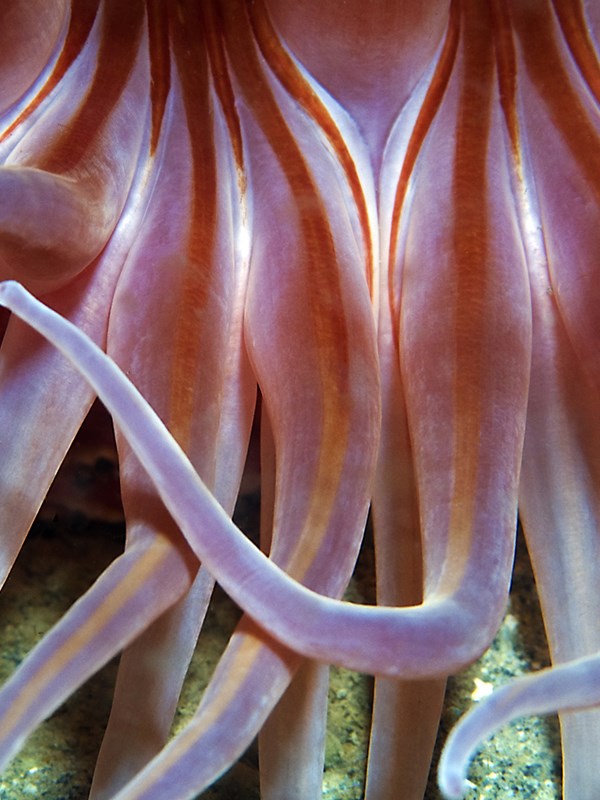
Sand Rose Anemone
Scientific Name Urticina columbiana
Native To Pacific coast (from Vancouver Island to California)
Habitat Tidal pools and offshore
Diet Sea urchins, small fish, clams, mussels and detritus (dead particulate organic matter)
Size and Age Up to 1 m (39 in) in diameter; lifespan estimated to be several decades long
Natural History
These anemones are typically not found attached to rocks like other anemones. They live on the sandy ocean floor amongst sand, mud and shells. Normally, they are partially buried with just their tentacles exposed. They got the name ‘rose’ because they are coloured in shades of pink and deep red.
Near Threatened

Conservation Status
Pollution, such as oil spills and agricultural runoff degrade the habitat of the sand rose anemone. Additionally, as ocean levels rise from climate change, it makes the tidal pools these anemones live in unsuitable.
Interesting Facts
- Candy-striped shrimp have been to known to live in this anemones tentacles, the same way clown fish live in tropical anemones.
- This anemone is one of the largest in the world, reaching 1 m (39 in) in diameter.
- When food is plentiful these anemones will increase in size; when food is scarce they will decrease in size.

